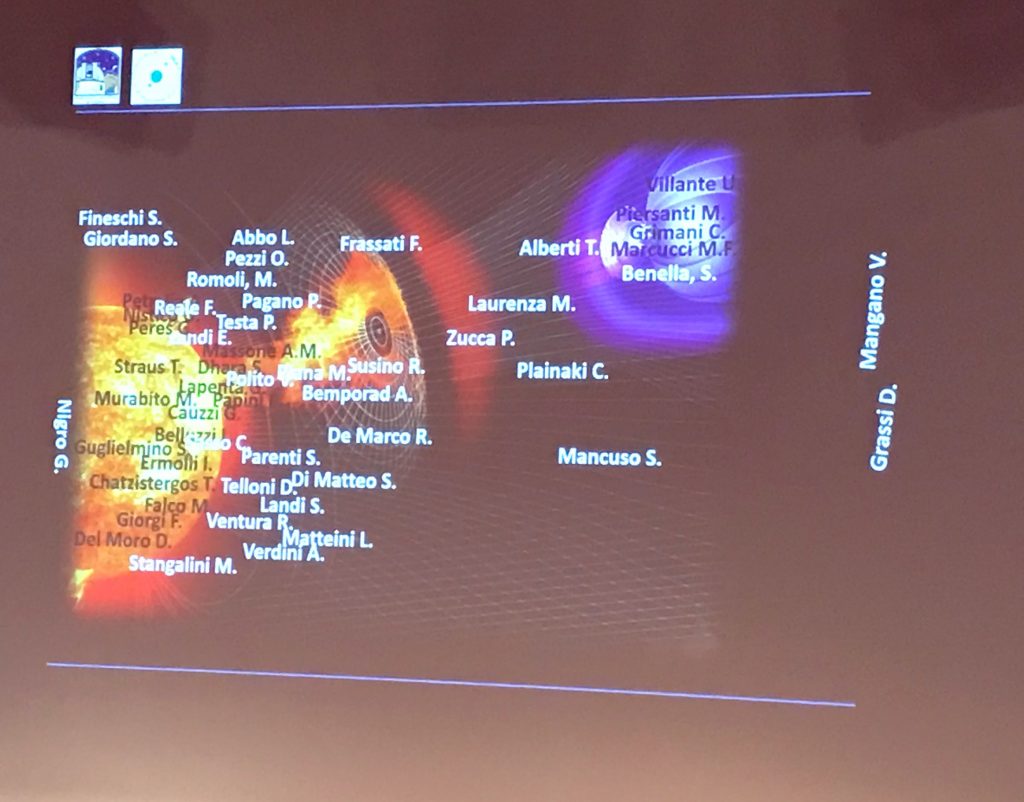
A Slide presented by P.Romano, showing the participant to the meeting and their 'position' in the Heliosphere.

The purpose of the Italian Solar and Heliospheric Community (SoHe) conferences is to provide a forum at the national level for the discussion of the main topics of solar and heliospheric physics, and space weather. The conference will strengthen existing collaborations and establish new ones, both in the context of projects in which part of the community is involved in. This edition has been held in Turin, on October 28-31, 2018.
Our team presented many contributions to the meeting!
In the section “The cool Sun: solar cycle, solar wind, coronal heating”, L. Giovannelli presented the talk “Diffusion of emerging bipolar magnetic pairs in solar photosphere“showing an analysis on the diffusion of a subset of magnetic elements, identified as emerging new bipolar elements. This study about the transport and diffusion of the magnetic field on the solar photosphere, confirms the presence of a peculiar super-diffusive regime in the solar atmosphere. This has important effects on the efficiency of the magnetic field transport on advective solar global dynamo models.
In the same section, G. Viavattene presented the talk: “Testing the Gallavotti-Cohen Fluctuation Theorem on the Solar Photosphere“, estimating the entropy production rate on the solar surface making use of high resolutions spectro-polarimetric data of a Quiet Sun region acquired with the IBIS instrument at the DST. This analysis led to a preliminary confirmation of the validity of the GCFT in the solar convection field and to a novel estimation of the Rayleigh number associated to the solar surface plasma flows.
In the section “Solar-planetary relations, space weather, and climate”, D. Del Moro presented some recent applications of the ICME propagation model developed at UTOV during the talk “The Probabilistic Drag Based Model for ICME propagation“. The capability to propagate ICMEs into the whole heliosphere, its accuracy and extremely short computation times, make the P-DBM a promising candidate for Space Weather application and for the need of present and future interplanetary missions.
Also in that section, two posters about “The Ionosphere Prediction Service Project” and “Introducing SWERTO: a Regional Space Weather Service” where presented to the community, attracting comments and questions from the participants.




More Stories
Symposium of Space Climate 9 (Nagoya, Japan)
3rd Italian Space Weather Community Meeting
The 17th European Solar Physics Meeting (ESPM-17)